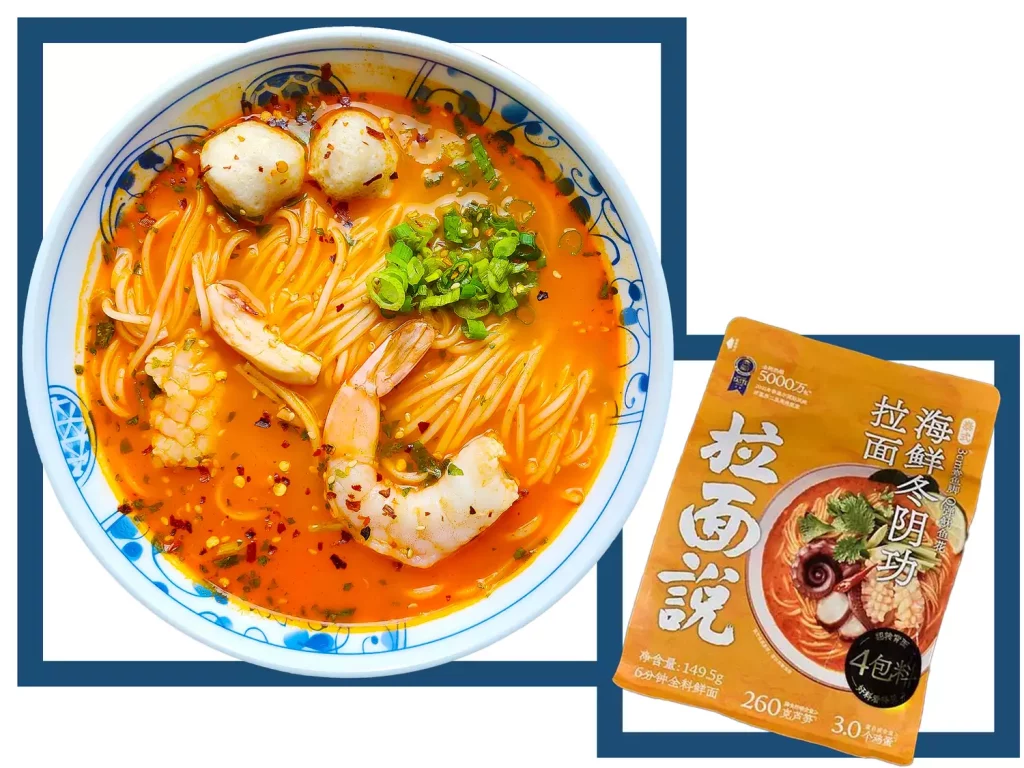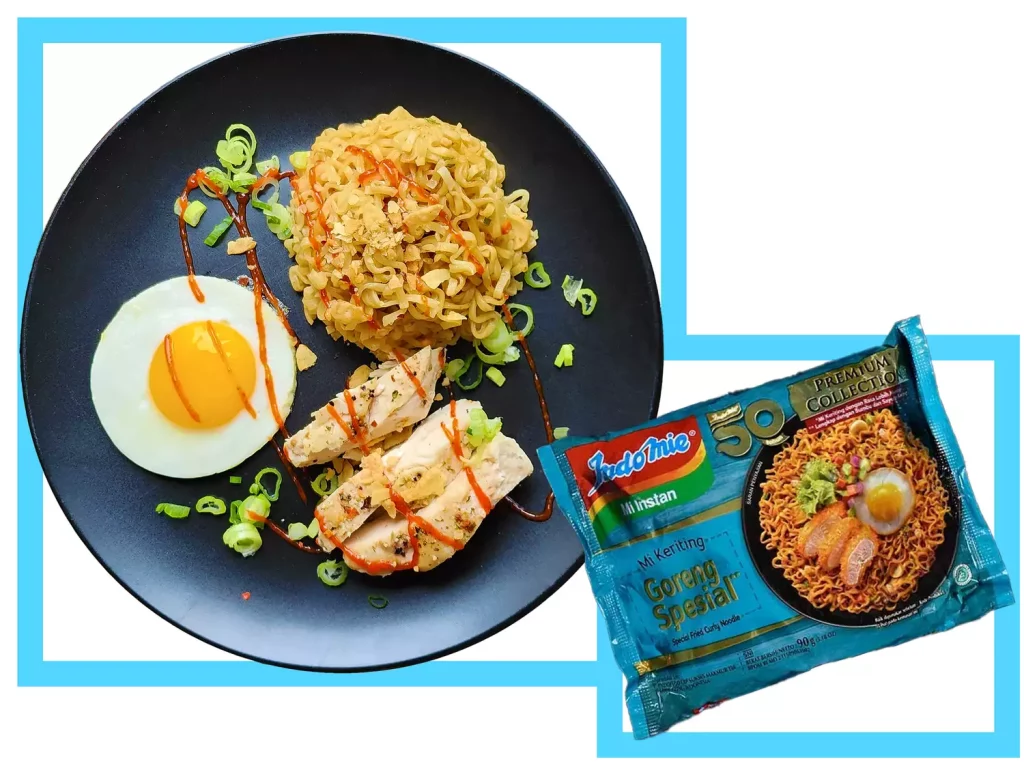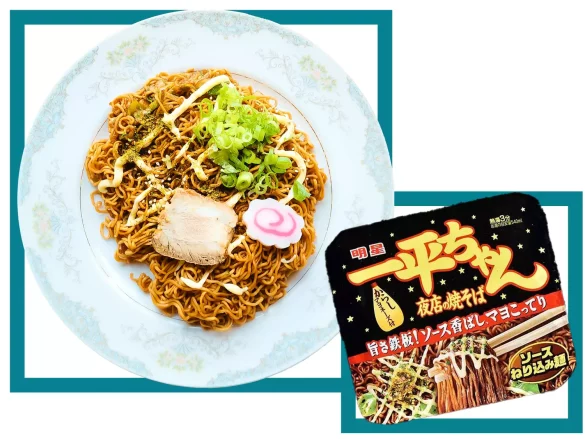Introduction
Ramen, a beloved noodle dish with origins in Japan, has captivated the global palate with its rich flavors, diverse toppings, and comforting qualities. Although ramen is often associated with Japanese cuisine, its variations and influence extend far beyond Japan’s borders. From the classic Tonkotsu ramen to the lesser-known variations like Korean Jajangmyeon and Indonesian Mi Goreng, this guide delves into the top 10 ramen noodles from around the world, exploring their histories, unique characteristics, and culinary significance.
1. Tonkotsu Ramen (Japan)
A. Description:
- Broth: Tonkotsu ramen is renowned for its rich, creamy pork bone broth. The broth is made by boiling pork bones for several hours until the collagen breaks down, creating a milky, flavorful soup.
- Noodles: The noodles are usually thin and straight, designed to complement the thick, hearty broth.
B. History and Evolution:
- Origins: Tonkotsu ramen originated in Hakata, Fukuoka, Japan, in the early 20th century. It evolved from traditional pork bone soups, adapting to local tastes and ingredients.
- Development: The dish gained popularity in the 1950s and 1960s, spreading throughout Japan and eventually becoming a global favorite.
C. Key Ingredients:
- Toppings: Common toppings include sliced pork belly (chashu), green onions, mushrooms, and pickled bamboo shoots (menma).
- Seasoning: The broth is seasoned with soy sauce (shoyu) or salt (shio), and sometimes flavored with garlic oil or sesame oil.
D. Culinary Significance:
- Popularity: Tonkotsu ramen is celebrated for its rich, umami flavor and hearty texture. It represents a quintessential example of Japanese ramen culture.
- Regional Variations: While Hakata-style Tonkotsu is the most famous, variations exist across Japan, each with unique local twists and ingredients.
2. Shoyu Ramen (Japan)
A. Description:
- Broth: Shoyu ramen features a soy sauce-based broth, offering a clear, brown soup with a complex, savory flavor profile.
- Noodles: The noodles are typically curly or straight, often served with a lighter, less fatty broth compared to Tonkotsu.
B. History and Evolution:
- Origins: Shoyu ramen has roots in the early 20th century and is believed to have been influenced by Chinese noodle soups. It became popular in Tokyo and has since spread throughout Japan.
- Development: The soy sauce-based broth offers a more subtle flavor compared to other ramen styles, making it versatile and widely appreciated.
C. Key Ingredients:
- Toppings: Common toppings include sliced chicken or pork, green onions, nori (seaweed), and boiled eggs.
- Seasoning: The broth is seasoned with soy sauce, which imparts a deep, salty flavor and enhances the umami notes.
D. Culinary Significance:
- Popularity: Shoyu ramen is known for its balanced flavor and clear broth. It represents a classic style of ramen that is both accessible and satisfying.
- Regional Variations: Variations can include different types of noodles and toppings, reflecting regional preferences and ingredients.

3. Miso Ramen (Japan)
A. Description:
- Broth: Miso ramen features a broth flavored with miso paste, a fermented soybean product that adds a rich, umami taste and a slightly sweet, nutty flavor.
- Noodles: The noodles are usually curly and thick, designed to hold up against the robust miso-flavored broth.
B. History and Evolution:
- Origins: Miso ramen originated in Hokkaido, Japan, in the mid-20th century. It was created to provide a hearty, flavorful alternative to traditional ramen broths.
- Development: Miso ramen quickly gained popularity and became a staple in many ramen shops, with various regional and personal variations emerging.
C. Key Ingredients:
- Toppings: Common toppings include corn, bamboo shoots, ground pork, and green onions.
- Seasoning: The broth is enhanced with miso paste, which contributes to the deep, savory flavor and thick, rich texture.
D. Culinary Significance:
- Popularity: Miso ramen is celebrated for its hearty, flavorful broth and comforting qualities. It is particularly popular in colder regions due to its warming nature.
- Regional Variations: Miso ramen can vary widely, with different types of miso (white, red, or blended) and additional ingredients reflecting regional and personal preferences.
4. Tsukemen (Japan)
A. Description:
- Broth: Tsukemen features a separate, concentrated dipping sauce that is served alongside cold noodles. The dipping sauce is typically rich and flavorful, made from a base of soy sauce, miso, or pork stock.
- Noodles: The noodles are usually thick and chewy, designed to hold up to the dipping sauce.
B. History and Evolution:
- Origins: Tsukemen originated in Tokyo in the 1960s. It was developed as a variation of traditional ramen, offering a new way to enjoy the flavors and textures of the dish.
- Development: Tsukemen became popular for its unique dining experience and has since spread to ramen shops across Japan and beyond.
C. Key Ingredients:
- Toppings: Common toppings include sliced pork, green onions, bamboo shoots, and a boiled egg.
- Seasoning: The dipping sauce is often seasoned with soy sauce or miso, and may include additional ingredients such as garlic, ginger, or sesame oil.
D. Culinary Significance:
- Popularity: Tsukemen offers a different way to enjoy ramen, allowing diners to savor the flavors of the dipping sauce and noodles separately. It is particularly popular during the warmer months.
- Regional Variations: Tsukemen can vary in terms of dipping sauce ingredients and noodle types, reflecting regional and personal preferences.

5. Jajangmyeon (Korea)
A. Description:
- Broth: Jajangmyeon is a Korean noodle dish featuring a savory black bean paste sauce (chunjang) instead of a broth. The sauce is thick and dark, with a slightly sweet and salty flavor.
- Noodles: The noodles are typically thick and chewy, similar to those used in Chinese-style noodles.
B. History and Evolution:
- Origins: Jajangmyeon has its roots in Chinese cuisine but was adapted by Korean immigrants in the early 20th century. It became a popular dish in Korea, with its own unique twist.
- Development: The dish evolved to include local ingredients and flavors, becoming a staple in Korean cuisine.
C. Key Ingredients:
- Toppings: Common toppings include diced pork, onions, zucchini, and sometimes potatoes. It is often garnished with sliced cucumbers and pickled radishes.
- Seasoning: The black bean paste (chunjang) is the primary seasoning, providing a rich, umami flavor.
D. Culinary Significance:
- Popularity: Jajangmyeon is a beloved comfort food in Korea, often enjoyed as a quick and satisfying meal. It is commonly served in Korean-Chinese restaurants.
- Regional Variations: Variations exist in terms of ingredients and preparation methods, reflecting regional and personal preferences.
6. Jjamppong (Korea)
A. Description:
- Broth: Jjamppong features a spicy, seafood-based broth with a rich, complex flavor. The broth is made from a combination of seafood, vegetables, and spicy chili paste (gochugaru).
- Noodles: The noodles are typically thick and chewy, designed to absorb the flavorful broth.
B. History and Evolution:
- Origins: Jjamppong originated in Korea and was influenced by Chinese-style spicy noodle soups. It became popular in Korean-Chinese cuisine.
- Development: The dish has evolved to include a variety of seafood and vegetables, making it a hearty and flavorful option.
C. Key Ingredients:
- Toppings: Common toppings include seafood such as shrimp, squid, and clams, along with vegetables like cabbage, mushrooms, and carrots.
- Seasoning: The broth is flavored with spicy chili paste, garlic, and ginger, contributing to its bold, spicy flavor.
D. Culinary Significance:
- Popularity: Jjamppong is a popular dish in Korean-Chinese restaurants and is enjoyed for its spicy, seafood-rich broth. It is often eaten as a hearty meal or late-night snack.
- Regional Variations: Variations exist in terms of seafood and spice levels, reflecting regional and personal preferences.
7. Mi Goreng (Indonesia)
A. Description:
- Broth: Mi Goreng is a dry noodle dish, meaning it does not have a broth. Instead, it is stir-fried with a savory and slightly sweet sauce made from soy sauce, kecap manis (sweet soy sauce), and other seasonings.
- Noodles: The noodles are typically thin and egg-based, providing a soft and chewy texture.
B. History and Evolution:
- Origins: Mi Goreng has its roots in Indonesian cuisine and was influenced by Chinese stir-fried noodle dishes. It

